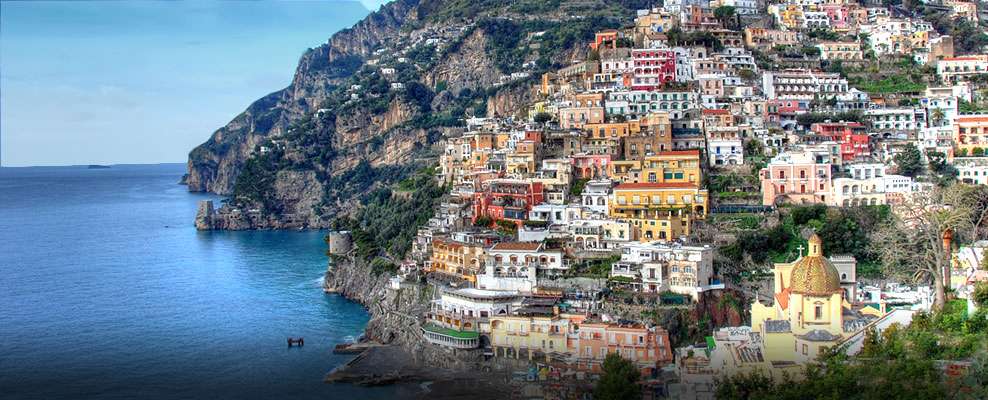Interested in the history of Campania Italy? Want to know historical facts about Campania? Our guide gives you the information you want to know.
The region known as Campania had the Opici and Aurunci peoples as its first recorded inhabitants. Where Naples is today, the first of the Greek colonies was at Cuma during the 8th century BC. Etruscans were next to rule the region during the 6th century BC and the Sannites followed and ruled until the Holy Roman Empire annexed the area in the 4th century BC. What followed was a fairly peaceful and stable period until the abrupt eruption in 79 AD of Vesuvius. The eruption caused the complete and total destruction of the cities of Herculaneum and Pompeii.
Italian History of Campania
Once the Holy Roman Empire saw its demise, the region became the battleground of the Byzantines and the Goths as both tried to seize the area during the 5th-6th centuries. Amalfi and Naples were republics that were independent, but Campania became part of the Lombard Duchy of Benevento.
Robert and Roger Guiscard both Normans were responsible for reuniting Campania in the 11th century when they wrested the area from the Byzantines who had thus dominated southern Italy. The Kingdom of Sicily in 1139 was invested by the Pope to Roger II who was a nephew of Robert.
When Charles of Anjou or Charles I in 1282 lost Sicily, he still managed to keep the territories on the mainland. Known as the Kingdom of Naples, the area included Campania, Calabria, Puglia, and Abruzzo. Naples was the capitol. The Kingdoms of Sicily and Naples united and again separated. The Spanish ruled the area from 1504-1713.
Once the Treaty of Blois ceded Sicily and Naples to Spain, southern Italy saw the next two centuries bring about an era that is said to have been a time of immense poverty and exploitation. Disease and famine ran rampant as agricultural pursuits were interrupted by land grabbers of both the Spanish nobles and the Church.
Campania had already seen its fair share of rulers when first the Austrians occupied the area and then again the Spaniards. Ferdinand had his hand forced in 1820 when an uprising brought about a constitution. Garibaldi took the area next and it was in 1861 that the two Kingdoms of Sicily became one when they merged as part of the new Kingdom of Italy.
During the latter part of the 19th century into the 20th century, Campania saw many of its people migrate to the new world of opportunity that was America. Today, Campania is popular among Italians as well as Europeans as a holiday destination. There is much history to uncover and beautiful coastal breezes to soothe you when you visit the historic area of Campania, Italy





